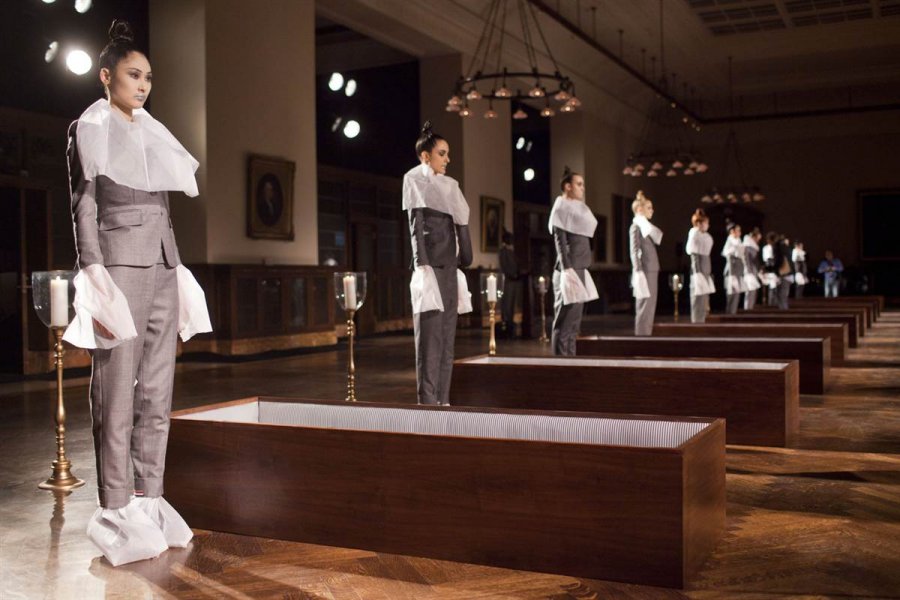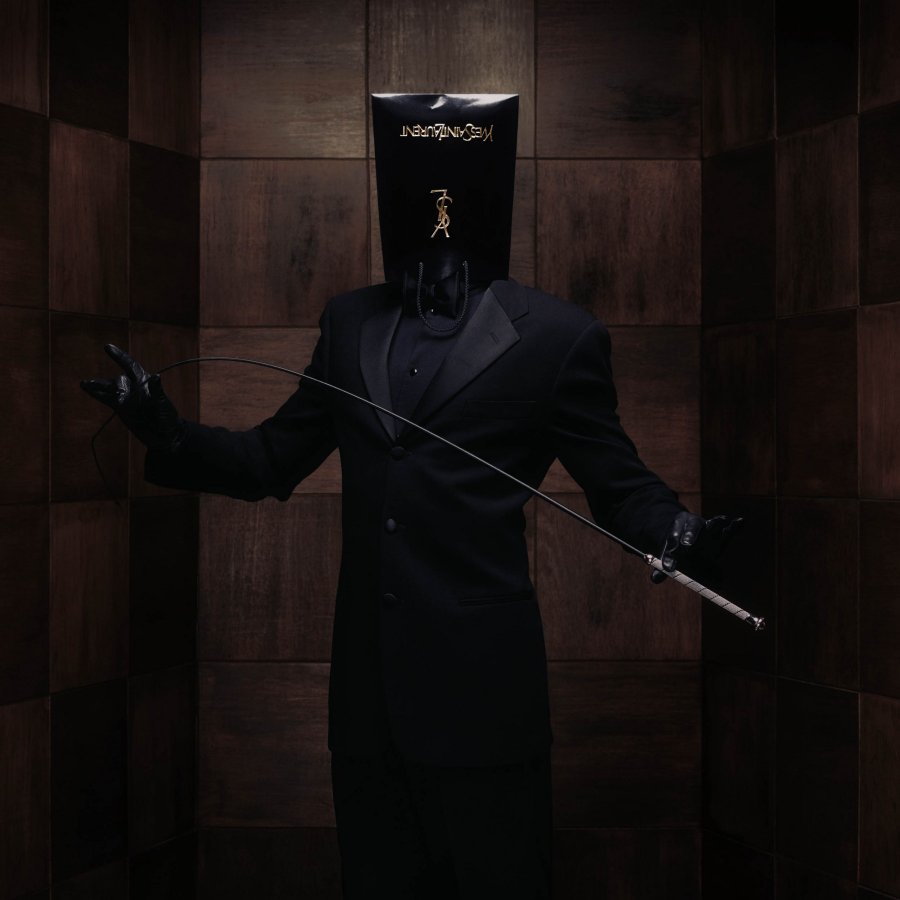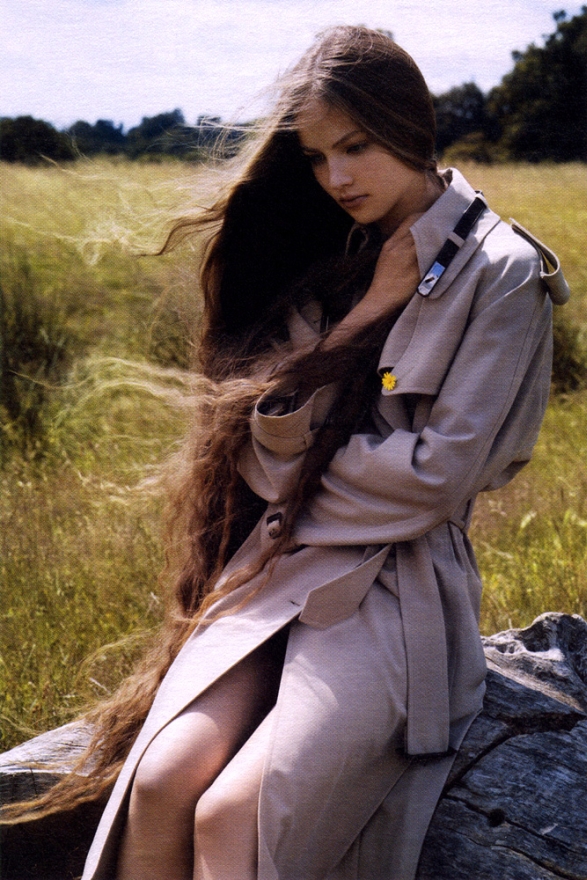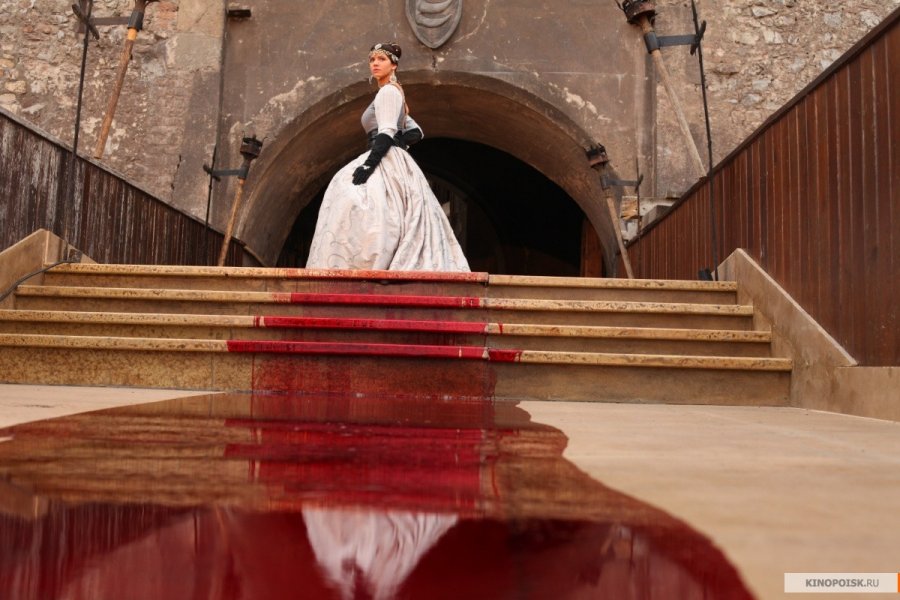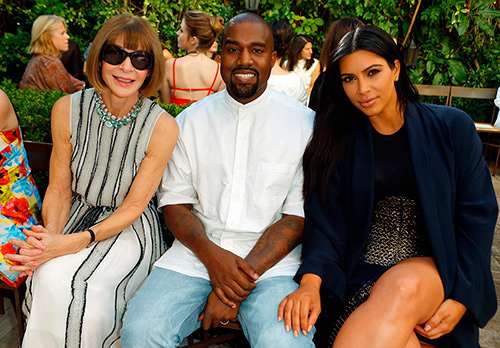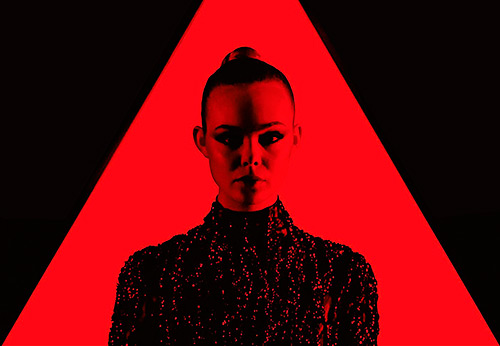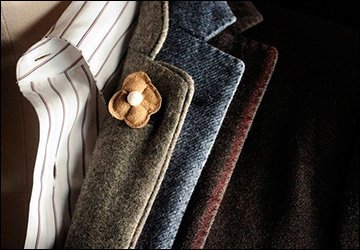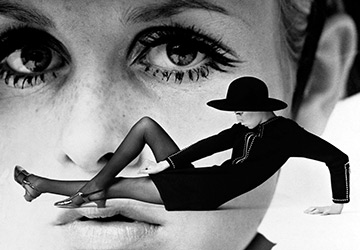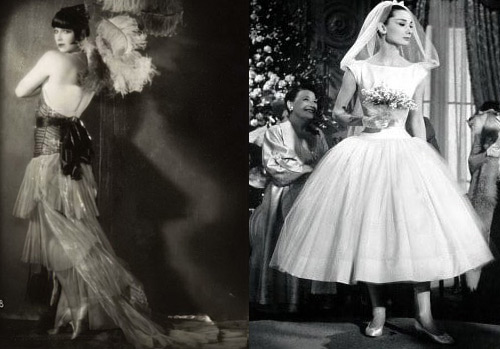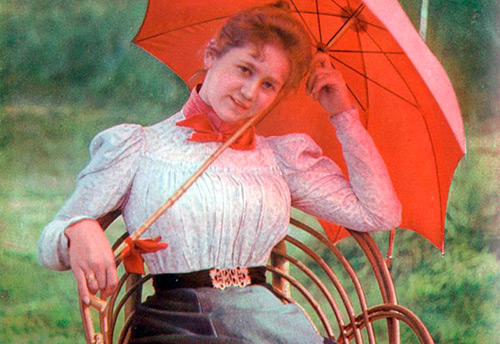Fashion world
Fashion as a show
A bit of theory
Despite the name (what's wrong with the words "fashion" and "performance"? - nothing), the article will tell about fashion as a monster, about fashion as power, about fashion as coercion. About fashion as something that deprives us of the opportunity to be ourselves. About fashion as a form of control over society.
Two Frenchmen will tell us about "scary fashion". Well, who else can tell about fashion if not the French. The names of our experts are Guy Debord and Michel Foucault. Their life fell on the twentieth century. They didn't write about fashion directly, but they wrote about society. And, as you know, a society without fashion, and even in the twentieth century (the time of Coco Chanel, Christian Dior) in any way.
The twentieth century - from about the 1910s to the 1970s - is, in general, a rather gloomy time. From the point of view of philosophers. This is the time of the monsters. The monster was the mass society that emerges in the twentieth century. Mass society is all of us, average, deprived of our own "I". Each of us loses personality, becoming part of a gray faceless crowd. We are controlled as they want, we are controlled, they are being watched. Observation is another monster of the 20th century. We are all being watched. Now you will be delighted - the time of the masses has passed, nowadays society is different - networked. But we are not talking about that now.
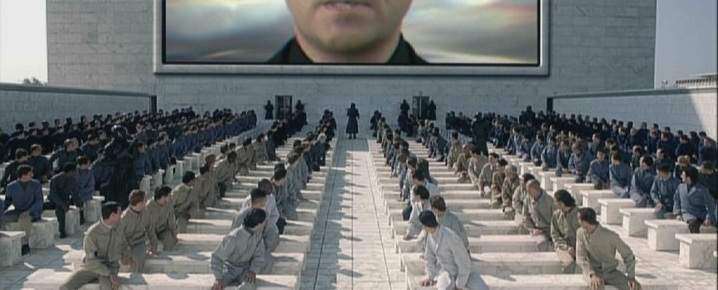
Still from the film "Equilibrium"
Culture is also becoming a monster in the twentieth century. Culture (cinema, literature, art) is just entertainment, which averages us, makes us a mass. And we ourselves are all slipping into barbarism, we begin to believe in myths and, oh, horror, we worship goods.
In general, it is not surprising that fashion in the twentieth century has become a monster.
So, to the point. The Society of the Spectacle is the name of a book published in 1967 by Guy Debord, a French philosopher, historian and writer.
"The Society of the Spectacle" is about capitalism (another monster that migrated, however, from the 19th century to the 20th). After all, everyone remembers the old man Marx - the commodity, the productive forces, the bourgeoisie and the proletariat exploited by it. Debord assumes that the proletariat has lost. The proletariat was never able to defeat capital, which still rules us all. The main goal is to sell the product. The masses, the proletariat, which is now not only in factories, but also in the service sector, and in intellectual professions (yes, the proletariat is now with a higher education), must buy goods. A product that they may not need at all.
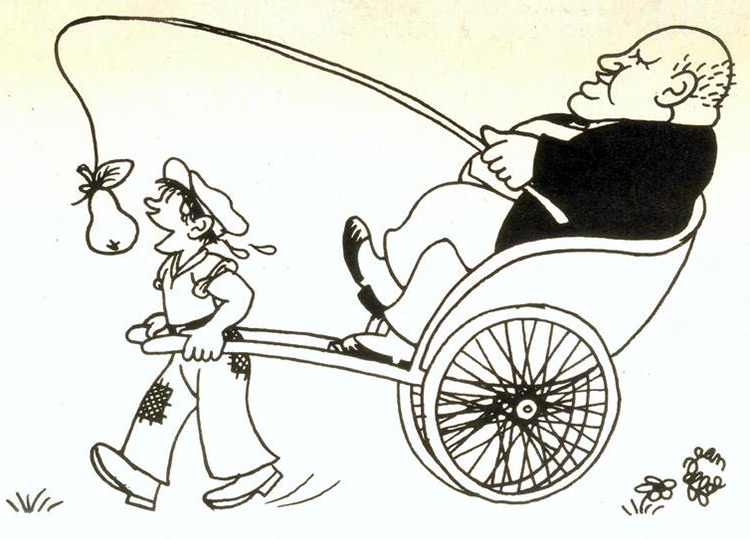
Jean Effel. Caricature. The bourgeois and the proletarian.
What does fashion have to do with it? Fashion is a commodity. After all, no one will doubt that designer, branded, however, like any other clothing, is a commodity. But the product is not only clothes. The product is all fashion, together with the ideas and standards of beauty, together with the names of the designers, along with what fashion promises - success, confidence, beauty.
Only with bag from Chanel you will be truly successful, advertising promises us, and without a bag, you are a sucker. Fashion is a commodity, not only material, but also your image. And only the name of a successful designer on your blouse, and only the color and style of the season will give you the opportunity to feel at your best.
“The play is a permanent opium war [the opium war is when the British hooked the Chinese on a drug, opium, and thus forced them to trade with England - the Chinese were already addicted to the drug, they were forced to buy it], conducted in order to achieve adoption the identity of goods with goods, and satisfaction with a threshold of survival that grows according to its own laws, ”wrote Debord in the 1960s.
We believe in "must have" - a trendy thing, which is the main hit and squeak of fashion. In each season "must have" is announced by fashion industry experts (designers, editors of glossy magazines, stylists, buyers, fashion bloggers). "Must have" translated from English means "must have".Should, that is, obliged, that is, this thing, for example, Marsala-colored shoes are simply vital for you in this season. We are led to believe that we do not need Marsala shoes for pleasure, not only for him, we need them to survive.
To be is replaced by to have, to have seems to be. In the "society of the spectacle" the main thing is to appear, the main thing is to have the right image. And fashion creates it. Fashion is a product that we buy to create an image. But fashion itself is only an image, a performance that is created so that we buy a product, that is, fashion.
Fashion is the most totalitarian spectacle and the most contemplative. We are given images - top models, stars, designers. Fashion weeks, fashion magazines, advertisements dictate images and actions (only being in a certain image, you will achieve success, they say).
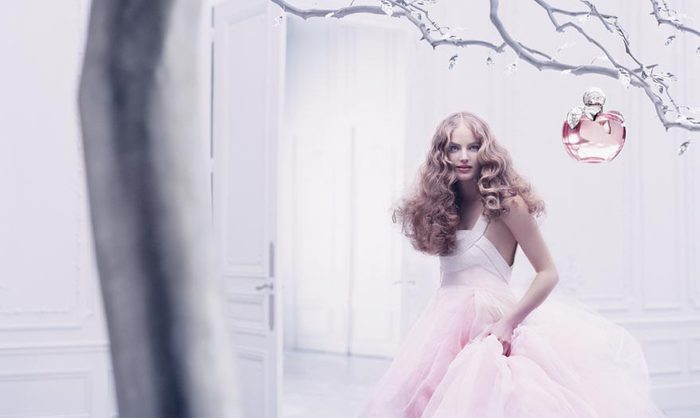
Ruslana Korshunova in an advertisement for Nina Ricci.
Guy Debord quite often draws analogies between religion and the cult of the commodity. "The play is a material reconstruction of a religious illusion." And fashion as a performance is also a religion. There are adepts - those who follow fashion fanatically, there are sacred books - fashion magazines, there are cultists - designers, hairdressers, stylists, there are objects of worship - models, beauty standards, fashionable things. At the same time, things themselves turn into fetishes, into objects of worship.
Guy Debord also writes about “stars”, characterizing them as a spectacular representation of a living person (in other words, they, “stars”, represent not the person himself, but only his image). That is, a "star" is a top model, a fashion designer, about whom they write and who is shown, a show business star who advertises a particular brand, they are all just an image.
All of them are only “characters in the play”, but not personalities in and of themselves. And the goal of the show is to sell us a product. "Stars" demonstrate this or that image through the press, through television, through movies, through the Internet - the same Instagram. In the "society of the spectacle," the product exists for the sake of the product, that is, fashion exists for the sake of fashion.
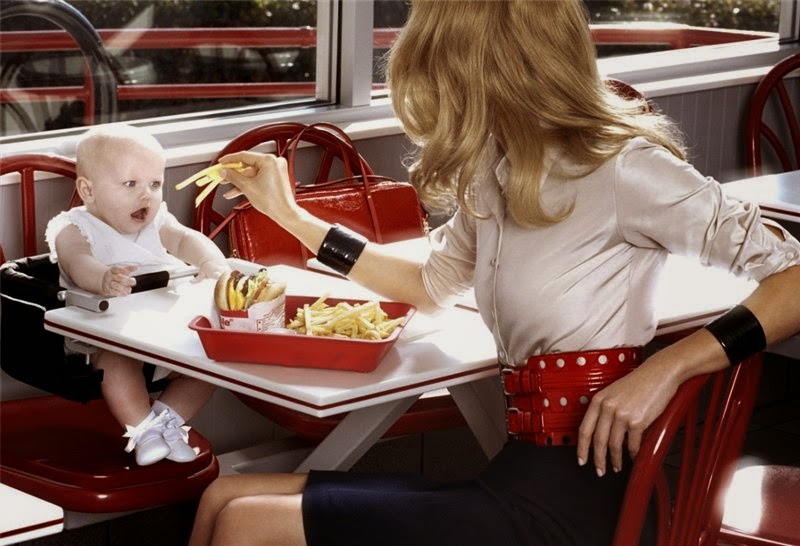
Photographer Miles Aldridge.
The perfect bright image in the spirit of fashion.
At the same time, one should not forget that “the society, the bearer of the performance, dominates the underdeveloped regions not only through economic hegemony. It also dominates them as the society of the spectacle, ”asserted Guy Debord. An example is the Asian market. Fashion in Asia is closely tied to Europe, not only because many brands make their clothes in Asia, but because the "European spectacle" is penetrating Asia - the Asian market for European models, European-born fashion magazines published in Asia.
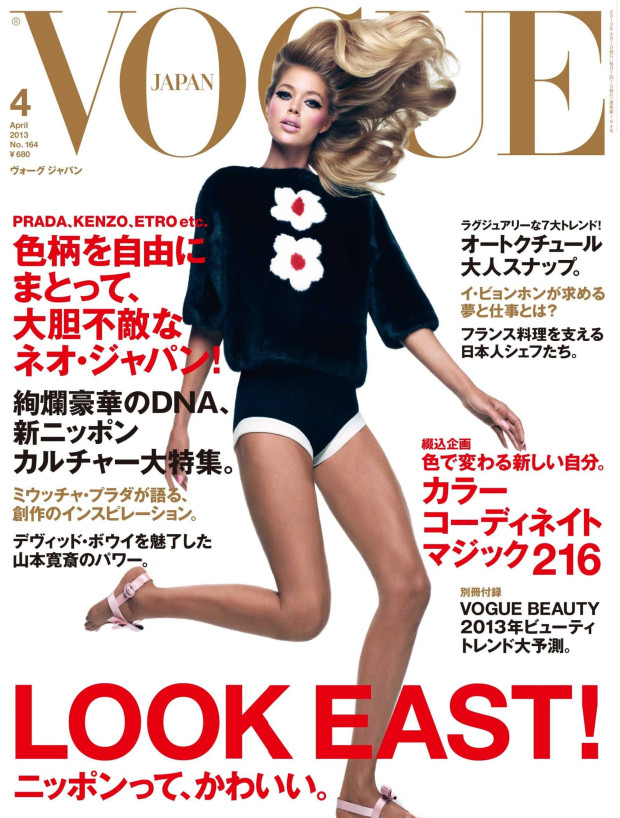
Vogue Japan magazine cover. April 2024.
Another point of interest is also interesting, which also echoes what Guy Debord wrote. Also, the French thinker of the mid-twentieth century Michel Foucault believed that we do not live in a society of the spectacle, but in a society of supervision. We are being followed. But then another concept arises - in the "society of the spectacle" they are watching not only us, but we are also watching those who follow us. However, this is no longer scary, but even desirable. An example is social networks, or Instagram, if we talk about fashion - showing your own images in the framework of fashion trends (life as an appearance).
This is such a "terrible fashion". Fashion at the service of capital. Fashion that makes us buy and buy unnecessary things at an inflated price, worshiping them. A fashion that compels us to enrich the bourgeoisie and remain an exploited proletariat. Fashion that makes us lose our own identity. Fashion as a monster comes from the twentieth century. A century in which it was scary to live.
Today the ideas are different, but here is not about them. Here only about "scary fashion". About fashion, which has two faces. One is a blue-eyed blonde with a pink bow, the other is a wrinkled old woman wearing huge glasses drinking your blood. Look at the second person. You might want to forget about it.
Veronica D.
Comments and Reviews
Add a comment
Rating news
Shades of clothing that make women look younger
What shades of hair make women younger: rules and photos
Funny wedding dresses - photos and ideas
12 most expensive down jackets for the winter
How to look 25 at 40: tips from supermodels
Beautiful schoolgirls
Anti-aging haircuts and hairstyles for women
Fashionable skirts for autumn and winter
Fashionable women's trousers for the cold season
Fashionable and stylish sandals for summer 2024
Spring-summer 2024
 Fashionable dresses and tops with thin spaghetti straps
Fashionable dresses and tops with thin spaghetti straps
 Bandana tops: how to wear stylishly and beautifully
Bandana tops: how to wear stylishly and beautifully
 How to put together the perfect men's wardrobe for the summer
How to put together the perfect men's wardrobe for the summer
 Trendy shorts for spring-summer 2024
Trendy shorts for spring-summer 2024
 Fashionable skirts for spring-summer 2024: a guide to online shopping
Fashionable skirts for spring-summer 2024: a guide to online shopping
 The most fashionable dresses spring-summer 2024: styles and colors
The most fashionable dresses spring-summer 2024: styles and colors
 Fashionable total look 2024: image ideas and trends
Fashionable total look 2024: image ideas and trends
